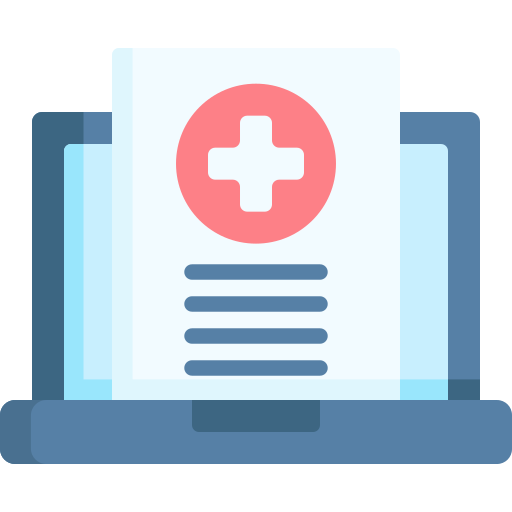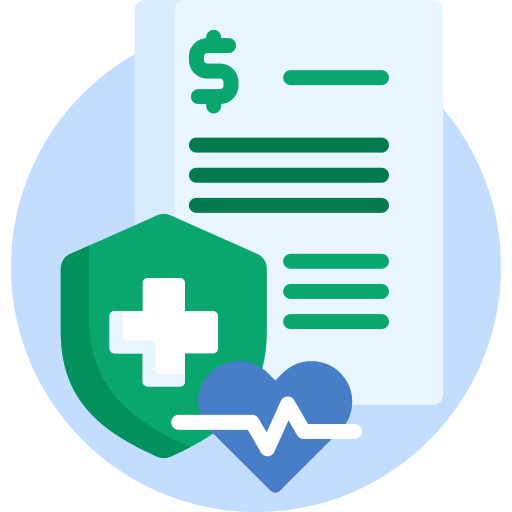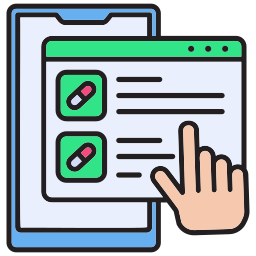FHIR adoption is transforming how healthcare information is exchanged, offering significant benefits to healthcare providers. By standardizing data exchange, FHIR allows different healthcare systems to communicate more effectively. This improved interoperability ensures that patient information is accessible and up-to-date, aiding healthcare providers in making well-informed clinical decisions. Let's discuss what FHIR is:
What is FHIR?
FHIR is a standard designed by HL7 to facilitate the electronic exchange of healthcare information. It focuses on making data sharing more straightforward by using modern web-based technologies. FHIR structures data into modular components known as "resources," representing specific clinical concepts such as patients, medications, and diagnoses. These resources can be easily assembled and utilized widely to meet diverse healthcare needs, streamlining the integration process for developers and healthcare providers.
The primary purpose of FHIR is to improve interoperability between different healthcare systems, enabling them to communicate and share information more effectively. Key features of FHIR include its flexibility, scalability, and ease of implementation. It supports various applications, from simple data retrieval to complex clinical workflows.
Versions of FHIR
1️⃣ FHIR DSTU1 (Draft Standard for Trial Use 1)
Released in 2014, FHIR DSTU1 was the initial version of the standard aimed at gathering feedback and testing the concepts introduced. It laid the groundwork for FHIR's core principles but was not fully mature.
2️⃣ FHIR DSTU2 (Draft Standard for Trial Use 2)
Released in 2015, DSTU2 introduced several improvements and new features based on feedback from DSTU1. It included more resources and refined existing ones, offering better support for healthcare data exchange and integration.
3️⃣ Standard for Trial Use 3 (STU 3)
The 2017 version of the FHIR Standard for Trial Use 3 included updates to the basic Clinical, Administrative, and Financial Resources as well as enhancements to the Clinical Decision Support and Clinical Quality Measure Resources. Additionally, a new workflow and task management structure were included.
4️⃣ FHIR R4 (Release 4)
Released in 2018, FHIR R4 marked the first version of the standard to be officially recognized as a normative standard. This version provided significant enhancements, including a more stable set of resources, and included updates for better support of clinical and administrative workflows.
5️⃣ FHIR R5 (Release 5)
Scheduled for release in 2024, FHIR R5 continues to build on the foundation established by previous versions. It introduces further refinements and new features, aiming to address emerging needs in the healthcare sector and improve the standard's applicability and usability.
Each version of FHIR has built upon the previous iterations, incorporating feedback and evolving to better meet the needs of the healthcare industry.
What is the Current Adoption of FHIR?
FHIR has been rapidly adopted by various sectors within the healthcare industry. Organizations ranging from healthcare providers to technology vendors and government agencies are implementing FHIR to improve data interoperability and streamline operations. Adopting this standard facilitates better communication and data exchange, ultimately improving patient care and operational efficiency.
Overview of Organizations and Entities Adopting FHIR
The adoption of FHIR is steadily increasing across various sectors within the healthcare industry. Numerous organizations, from healthcare providers to technology vendors and government agencies, are integrating FHIR standards into their systems to enhance data interoperability and improve patient care.
According to the 2023 State of FHIR Survey Results - 84% of respondents (32 out of 38) predict FHIR adoption will rise in the future. This is the same proportion as was recorded in 2023 (84% - 27 of 32).
Examples of Early Adopters and Success Stories
Several early adopters have successfully implemented FHIR, showcasing its potential benefits. For instance, the Mayo Clinic has integrated FHIR to improve data sharing between different systems, enhancing patient care coordination. Similarly, companies like Cerner and Epic have developed FHIR-based solutions that facilitate seamless data exchange between healthcare providers and patients.
Who is Adopting FHIR?
Healthcare providers, technology vendors, and government agencies are adopting FHIR standards to enhance data interoperability and streamline operations in the healthcare industry, with key adopters including EHR vendors and app developers. Let’s discuss this adoption in details:
✅ EHR Vendors
EHR vendors are at the forefront of adopting FHIR to ensure better integration and interoperability of their systems. By incorporating FHIR standards, these vendors facilitate smoother data exchange between several EHR systems, making patient information more accessible and consistent. This integration helps healthcare providers improve clinical decision-making and patient care by providing a unified view of patient health records.
✅ App Developers
App developers are increasingly using FHIR to build innovative healthcare applications. These applications range from patient-facing tools that allow individuals to manage their health data to clinical decision-support tools used by healthcare professionals. By using FHIR, app developers can ensure their applications are compatible with various healthcare systems, improving functionality and user experience.
✅ Care Providers
Care providers, including hospitals, clinics, and private practices, adopt FHIR to improve the interoperability of their EHR and other health information systems. This adoption enables care providers to share and access patient data more efficiently, leading to better-coordinated care and more informed treatment decisions. FHIR helps reduce redundancy and errors, ultimately enhancing patient outcomes.
✅ Payers/Insurers
Payers and insurers are also adopting FHIR to streamline data exchange and improve the accuracy of claim processing. By using FHIR standards, they can better communicate with healthcare providers and access necessary patient information quickly and reliably. This leads to more efficient operations, reducing administrative costs, and improving the overall efficiency of the healthcare system.
✅ Other Stakeholders
Other stakeholders, such as government agencies, health information exchanges (HIEs), and research institutions, are also adopting FHIR. Government agencies use FHIR to promote standardized data exchange across public health systems, while HIEs facilitate better data sharing among several healthcare organizations. Research institutions leverage FHIR to access and analyze large datasets, advancing medical research and innovation. These diverse adopters contribute to a more interconnected and efficient healthcare ecosystem.
Key Forces Behind FHIR Adoption
The primary drivers of FHIR adoption include the need for improved interoperability, the push for innovation in health IT, regulatory requirements, and the goal of enhancing patient care. These factors collectively encourage healthcare stakeholders to embrace FHIR for better data exchange and system integration.
❗ Innovation
FHIR establishes innovation by providing a flexible framework for developing new healthcare applications and services. Developers can create apps that integrate easily with existing health systems, enabling functionalities like real-time data access, patient engagement tools, and advanced analytics. This innovation leads to more effective and user-friendly healthcare solutions.
❗ Regulations and Grants
Regulations and government grants play a crucial role in driving FHIR adoption. Policies like the 21st Century Cures Act in the United States mandate the adoption of interoperable standards, including FHIR, to ensure patient data accessibility and exchange. Additionally, grants and funding from government agencies support the implementation of FHIR, helping healthcare organizations transition smoothly to the new standard.
❗ Improved Care
The adoption of FHIR significantly enhances patient care by ensuring healthcare providers have access to accurate and up-to-date patient information. This improved data exchange allows for better coordination among care teams, reduces the risk of medical errors, and supports more personalized treatment plans. Ultimately, FHIR helps healthcare providers deliver higher-quality care and achieve better patient outcomes.
Related Read - Healthcare Integration in 2024 - Its Challenges, Solutions and Future
5 Main Features of FHIR
Finally, we’ve reached FHIR features, and let us show them. Keep reading to learn about the benefits of FHIR. We’ll never forget the benefits it can give you!

⭐ Modular Resources
FHIR utilizes modular components called "resources" to represent specific clinical concepts, such as patients, medications, and observations. This modular approach simplifies the integration of different types of healthcare data.
⭐ Standardized Data Formats
FHIR supports both JSON and XML formats, providing flexibility in data exchange and ensuring compatibility with various systems and applications.
⭐ RESTful APIs
FHIR uses RESTful APIs for communication between systems, enabling efficient and straightforward data retrieval and updates over the web.
⭐ Interoperability
Designed for compatibility with existing healthcare standards, FHIR promotes better data exchange between diverse health IT systems, including electronic health records (EHRs) and health information exchanges (HIEs).
⭐ Real-time Data Access
FHIR facilitates real-time access to health data, allowing for timely updates and immediate availability of patient information.
4 Major Benefits of FHIR
As discussed, here are the benefits of adopting FHIR into your organization.

🎉 Improved Data Integration
FHIR's standardized approach to data representation makes it easier to integrate and share information across different healthcare systems, reducing fragmentation and improving data consistency.
🎉 Enhanced Patient Care
By providing accurate and up-to-date patient information, FHIR supports better clinical decision-making and care coordination, leading to improved patient outcomes.
🎉 Increased Efficiency
FHIR streamlines data exchange processes and reduces the complexity of system integration, leading to lower administrative costs and less time spent on manual data handling.
🎉 Flexibility for Developers
The modular and standardized nature of FHIR makes it easier for developers to create and maintain health IT applications, supporting innovation and the development of new healthcare solutions.
Countries that Adopted FHIR
Several countries have embraced FHIR to improve healthcare interoperability and data exchange. Here are a few countries:
🇺🇸 United States: The adoption of FHIR is widespread, driven by initiatives like the 21st Century Cures Act, which promotes interoperability and patient access to health data.
🇨🇦 Canada: Canada Health Infoway supports FHIR adoption to enhance data exchange between different health systems, improving care coordination.
🇦🇺 Australia: The Australian Digital Health Agency is implementing FHIR standards to ensure seamless data sharing across the national healthcare system.
🇬🇧 United Kingdom: The NHS has adopted FHIR as part of its efforts to create a more integrated and efficient health service, focusing on better patient outcomes.
🇩🇪 Germany: Germany is integrating FHIR into its healthcare IT infrastructure to support better communication and data sharing among healthcare providers.
These countries are leading the way in adopting FHIR, setting an example for others to follow in improving healthcare interoperability and patient care through standardized data exchange.
Use Cases of FHIR
Let's learn about these 10 use cases:
1️⃣ Patient Portals and Personal Health Records
PHRs and patient portals that provide people with simple access to their medical records are made possible by FHIR. Patients can view their medical history, lab results, medications, and more, empowering them to take an active role in managing their health.
2️⃣ Health Information Exchanges (HIEs)
FHIR facilitates the exchange of health information among different healthcare providers through Health Information Exchanges (HIEs). Interoperability ensures that patient data is accessible across various care settings, improving coordination and continuity of care.
3️⃣ Clinical Decision Support Systems (CDSS)
FHIR supports the integration of Clinical Decision Support Systems (CDSS) into EHRs. These systems analyze patient data to provide healthcare professionals with evidence-based recommendations, aiding in diagnosis and treatment decisions.
4️⃣ Mobile Health Applications
Mobile health applications use FHIR to connect with EHRs and other health IT systems. These apps allow patients to track their health metrics, receive reminders for medications or appointments, and communicate with their healthcare providers, enhancing patient engagement and care management.
5️⃣ Telehealth Services
FHIR enables telehealth platforms to integrate with EHRs, facilitating virtual consultations and remote monitoring. Healthcare providers can access patient records during telehealth visits, ensuring they have all the necessary information to provide quality care.
6️⃣ Population Health Management
FHIR supports population health management by enabling the aggregation and analysis of data from multiple sources. Public health organizations and healthcare providers can use this data to identify trends, manage chronic diseases, and implement preventive care measures.
7️⃣ Research and Clinical Trials
Data sharing and collection for studies and clinical trials are made easier by FHIR. Researchers can access standardized data from diverse sources, facilitating the study of large patient populations and accelerating medical discoveries.
8️⃣ Insurance Claims and Billing
FHIR streamlines the process of insurance claims and billing by ensuring accurate and timely exchange of data between healthcare providers and payers. It reduces administrative burdens and improves the efficiency of the reimbursement process.
9️⃣ Integrated Care Coordination
FHIR enhances integrated care coordination by allowing various healthcare providers involved in a patient’s care to share and access the same information. This ensures that all care team members are informed about the patient’s treatment plan and progress, leading to better outcomes.
🔟 Public Health Reporting
By standardizing the way that healthcare providers submit data to public health authorities, FHIR makes public health reporting easier. It enables real-time surveillance of disease outbreaks, monitoring of public health trends, and the implementation of timely interventions.
Future Outlook for FHIR
The future of FHIR is set to revolutionize healthcare interoperability, enabling seamless data exchange across the industry. With increasing adoption, regulatory support, and integration with advanced technologies, FHIR will drive significant advancements in patient care and healthcare delivery.
⏩ Broader Adoption and Integration
The future of FHIR looks promising with broader adoption and integration across the healthcare industry. As more healthcare organizations recognize the value of interoperability, FHIR is set to become the standard for health data exchange. This widespread adoption will lead to a more connected healthcare ecosystem, where patient information is easily accessible and transferable among providers, enhancing the continuity and quality of care.
⏩ Innovative Applications
With the ongoing advancements in healthcare technology, FHIR will play a crucial role in enabling innovative applications. The standard's flexibility and modularity make it ideal for integrating with emerging technologies such as AI, machine learning, and blockchain. These integrations will pave the way for advanced clinical decision support systems, predictive analytics, and personalized medicine, transforming how healthcare is delivered and managed.
⏩ Regulatory Support and Compliance
Government agencies and regulatory bodies are increasingly endorsing FHIR, which will drive its adoption further. Policies and regulations that mandate interoperability and data sharing among healthcare entities will create a favorable environment for FHIR's implementation. This regulatory support will ensure that healthcare organizations comply with interoperability standards, leading to more efficient and secure data exchanges.
⏩ Enhanced Patient Engagement
FHIR's capabilities will significantly improve patient engagement by enabling the development of more robust patient portals and mobile health applications. Patients will have greater access to their health information, allowing them to actively participate in their care. This transparency and accessibility will empower patients to make informed decisions about their health and foster better communication with their healthcare providers.
⏩ Global Impact
FHIR's potential extends beyond national borders, with its adoption gaining traction globally. International healthcare systems are beginning to recognize the benefits of FHIR for standardizing health data exchange and improving cross-border health services. As global adoption increases, FHIR will contribute to a more unified international healthcare landscape, facilitating global health initiatives and research collaborations.
How HealthConnect CoPilot Can Help You with FHIR Adoption in Healthcare?
Adoption of FHIR in the healthcare industry is critical to enhancing patient care and ensuring seamless data interoperability. Adopting this standard will result in more efficient, secure, and linked healthcare systems globally.
HealthConnect CoPilot can facilitate your FHIR adoption in healthcare by providing expert guidance and customized solutions tailored to your organization's needs. With deep expertise in health IT and interoperability standards, We offer comprehensive support, including system integration, data mapping, and compliance with regulatory requirements.
Our team ensures a smooth transition to FHIR, enhancing your capability to exchange health data efficiently and securely, ultimately improving patient outcomes and operational efficiency.
- What is FHIR?
FHIR (Fast Healthcare Interoperability Resources) is a standard for exchanging healthcare information electronically. It simplifies data sharing between different health systems, improving accessibility and integration.
- What are the benefits of FHIR adoption?
Adopting FHIR improves data sharing efficiency, supports better patient care through accessible records, and integrates diverse healthcare systems for smoother operations.
- How does HealthConnect CoPilot use FHIR?
HealthConnect CoPilot uses FHIR to connect various EHR systems and health applications, allowing for consistent data flow and improved patient information management.
- What role does data security play in HealthConnect CoPilot?
Data security is crucial in HealthConnect CoPilot. It protects patient information through strict access controls and encryption, ensuring that sensitive data remains secure and private.
- How does HealthConnect CoPilot improve healthcare integration?
HealthConnect CoPilot simplifies healthcare integration by connecting EHRs, wearable devices, and insurance platforms, creating a unified approach to managing patient information and improving overall care.

Pravin Uttarwar, CTO of Mindbowser
As the CTO of Mindbowser, a healthcare-focused software development company, I am dedicated to delivering cutting-edge digital solutions that transform patient care and operational efficiency. With over 16 years of experience and as an MIT alumnus, I specialize in healthcare interoperability, FHIR-compliant systems, and AI-powered platforms, crafting scalable products and architectures tailored to the unique needs of healthcare providers and enterprises.
I have spearheaded the development of over 100 products and platforms, guiding them from concept to full-fledged solutions. My expertise extends to scaling remote tech teams, driving EHR integrations, and building secure, cloud-native healthcare solutions. By shaping technology visions and roadmaps, I help clients achieve long-term growth and success in the rapidly evolving healthcare landscape.
HealthConnect CoPilot enabled us to access real-time patient health data through integration with Apple HealthKit, enhancing care delivery while maintaining HIPAA compliance. This led to personalized care and improved outcomes for patients.

AI-enhanced Obstetrics Clinical Decision Support Platform
HealthConnect CoPilot's integration with Epic's Hyperspace has transformed our workflow. Automated post-delivery examinations and HL7 protocol use ensure accurate updates to Epic. Their expertise empowers informed decision-making in childbirth

Top Provider for Customized Healthcare Solutions
HealthConnect CoPilot's helped us to integrate with leading tracking devices such as Apple Watches and Fitbit. This integration enables effortless syncing of health data, providing users with real-time insights displayed directly on our flagship products: smart mirrors and digital calendars.

A Provider of Customizable Display Solutions
Post a comment Cancel reply
Related Posts
Model Context Protocol (MCP): Revolutionizing Healthcare Chatbots with FHIR Integration
Healthcare technology is experiencing a paradigm shift with the emergence of Anthropic’s Model Context Protocol…
Healthcare Integration: The Understanding & Its Impact in Healthcare
Healthcare integration refers to connecting various systems, applications, and data sources within the healthcare ecosystem…
Value-based Care vs Fee-for-Service
Healthcare payment systems can feel a bit like deciding between paying for each item on…
Checklist for EHR Integration in the Healthcare System
EHR integration in the healthcare system refers to the seamless connection of EHR systems with…
Integrating FHIR and Genomics: How AI is Shaping the Future of Medicine
AI is transforming the way medicine approaches personalized healthcare, particularly through genomics. By analyzing vast…
The Road to Value-based Healthcare: How Interoperability Paves the Way
Interoperability in healthcare refers to the ability of different health information systems to exchange, interpret,…








